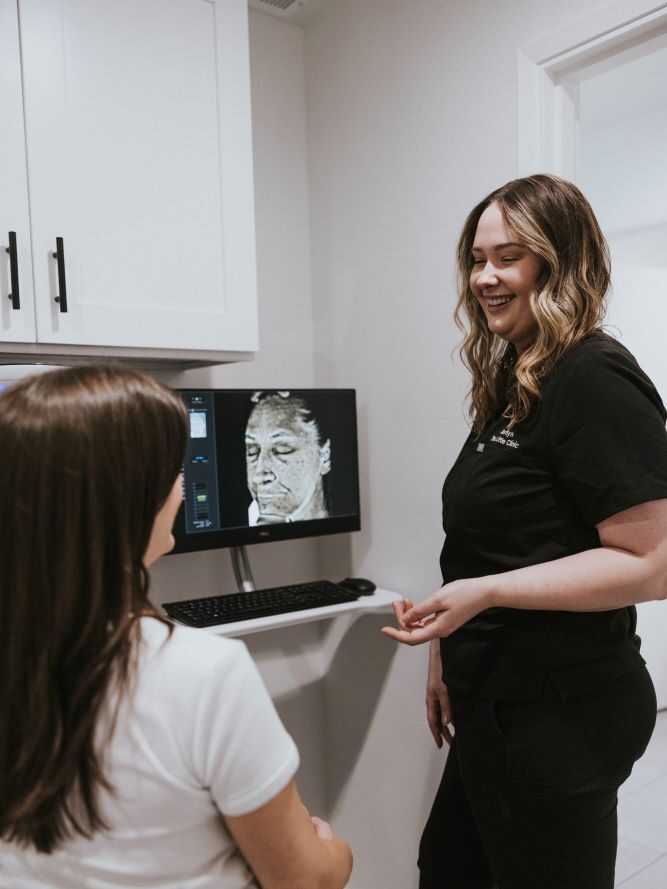Clear Skin Starts at TLC
Your guide to understanding & treating acne
Feeling Defeated with your Acne?
Acne is one of the most common skin conditions, affecting people of all ages and skin types. Whether it’s occasional breakouts or persistent blemishes, acne can impact not just the skin but also self-confidence.
At TLC, we want to help you understand the different types and causes of acne, then tailor a treatment plan to exactly what your skin needs. Everybody’s skin is different, so think of us as your skincare consultant as we team up together and navigate all of your options that lead to clear, healthy skin!

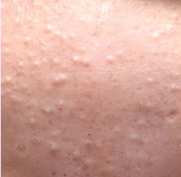
Whiteheads
A type of acne that forms when pores become clogged with oil, dead skin cells, and bacteria. Whiteheads are closed pores, resulting in a small, white bump on the skin. They’re often found on the face, chest, back, or shoulders—areas with a high concentration of oil glands.

Blackheads
This type of acne occurs when a hair follicle, or pore, becomes clogged with oil, dead skin cells, and debris. Blackheads have open pores which causes oxidation, darkening the clog and giving blackheads their characteristic black or dark brown appearance.
What Type of Acne Do You Struggle With?
Acne comes in various forms, from mild blemishes like whiteheads and blackheads to more severe cases such as cystic acne and nodules.
Each acne type has unique characteristics, causes, and treatment options. Understanding the different forms of acne is the first step toward effective management and healthier skin!
Keep in mind – we will always recommend that clients with nodules or cystic acne are also consulting with a Dermatologist or Naturopath.
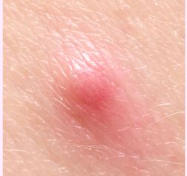
Papule
Papules are a lesion that appears as a small, raised, red bump on the skin. Unlike whiteheads and blackheads, papules do not have a visible pus-filled center. They are often tender to the touch and can occur when a clogged pore becomes inflamed due to irritation or bacterial activity.
If not treated carefully, papules can sometimes progress to more severe forms like pustules or nodules. It’s best to avoid squeezing or picking at papules, as this can lead to scarring!

Pustule
These are acne lesions that appears as a small, red bump with a white or yellowish center filled with pus. It forms when a clogged pore becomes inflamed and infected, leading to the accumulation of white blood cells. Pustules are often tender and may burst if irritated, which is why it’s important to avoid picking at them to prevent scarring.
They are a step up in severity from papules, as pustules involve more inflammation and the presence of pus.

Cyst
Cystic acne is one of the most severe forms of acne. It occurs when a pore becomes deeply clogged with oil, bacteria, and dead skin cells, leading to large, painful, pus-filled lumps beneath the skin. These cysts often feel tender or sore to the touch and can persist for weeks or longer. Unlike other types of acne, cystic acne is more likely to cause scarring if not treated properly.
Consulting a dermatologist is always recommended for cystic acne!
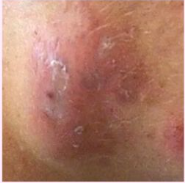
Nodule
Acne nodules are a severe form of acne characterized by large, hard, and painful lumps that develop deep beneath the skin’s surface. Unlike pustules or whiteheads, nodules do not contain pus and can feel solid to the touch. They form when a pore becomes severely clogged and inflamed, often due to excess oil, bacteria, and dead skin cells.
Because nodules are deeply embedded in the skin, they can take weeks or even months to resolve. If left untreated, they often lead to scarring.
What Are My Options?
There are various routes that we can take as far as treatment plans for your acne! It is recommended to schedule a consultation with one of our Estheticians to plan out the best route for you.

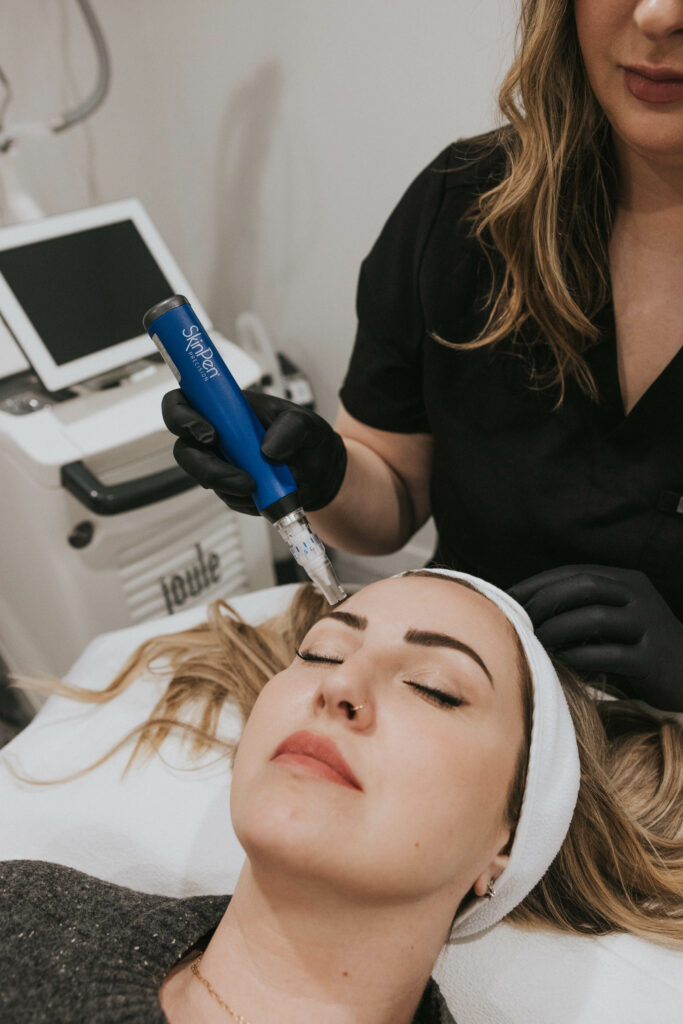
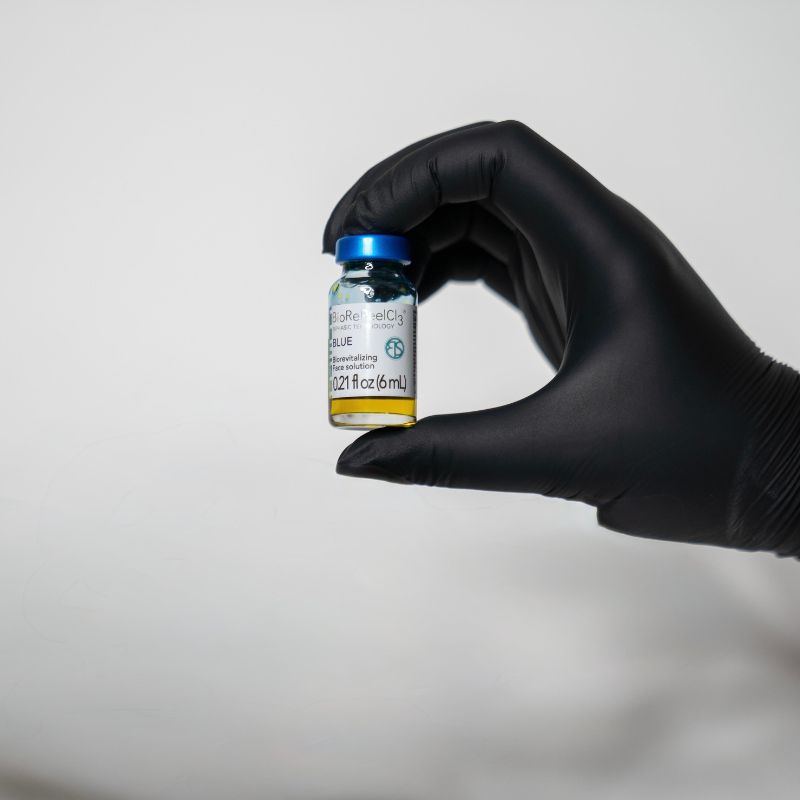
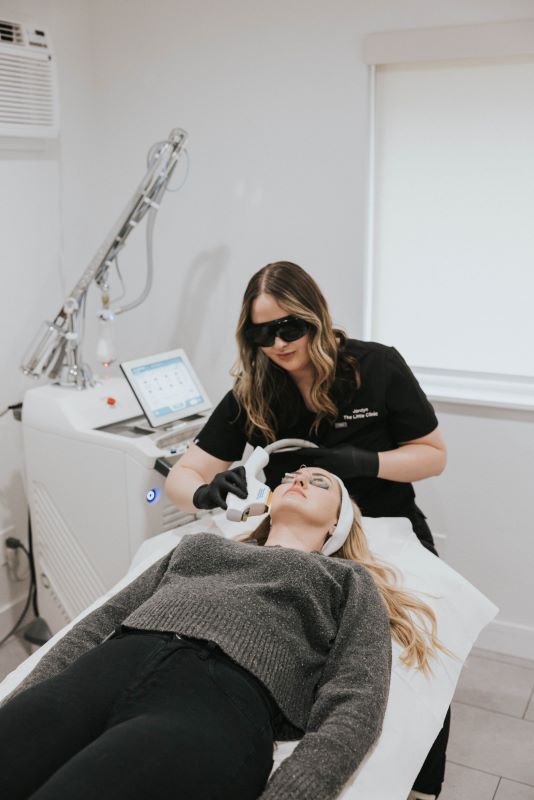
Get your TLC acne treatment plan started!
